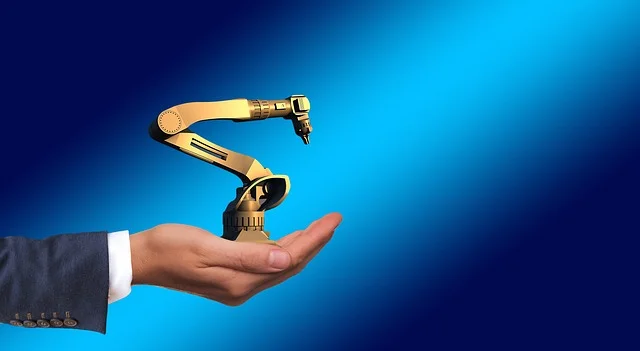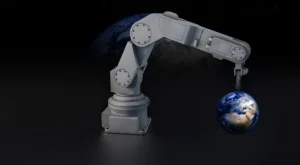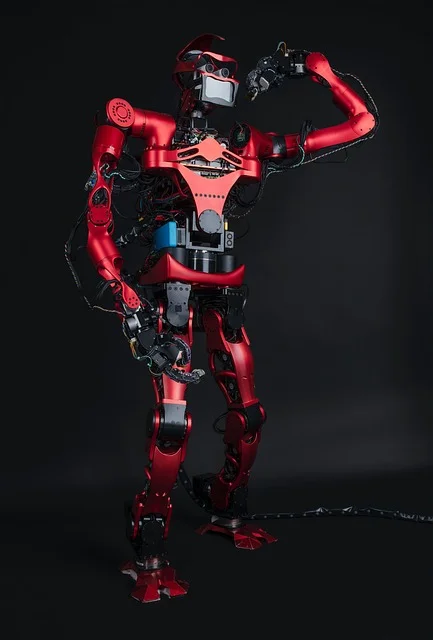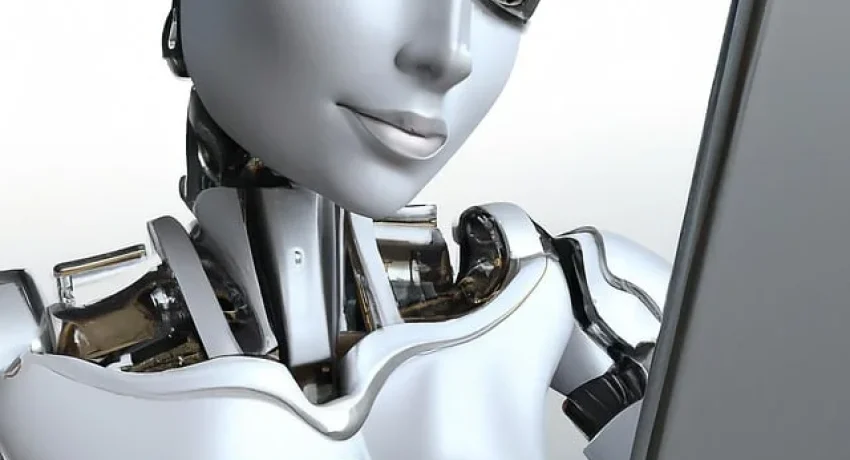SELF-DRIVING VEHICLES, DRONES, AND ROBOTICS IN LOGISTICS
AUTONOMOUS SYSTEMS: SELF-DRIVING VEHICLES, DRONES, AND ROBOTICS IN LOGISTICS, TRANSPORTATION, AND MANUFACTURING

Autonomous systems, or machines capable of performing tasks without human intervention, represent one of the most transformative technologies of the 21st century. These systems—ranging from self-driving vehicles and drones to advanced robotics—are rapidly evolving and promise to revolutionize industries such as logistics, transportation, and manufacturing. By leveraging artificial intelligence (AI), machine learning (ML), sensors, and sophisticated algorithms, autonomous systems are already enhancing efficiency, improving safety, and creating new opportunities in diverse sectors.
In this article, we will explore the ongoing development of autonomous systems, with a focus on self-driving vehicles, drones, and robotics. We will examine the advancements, challenges, and potential applications of these technologies in logistics, transportation, and manufacturing. Through this discussion, it becomes clear that the future of these autonomous systems is not only bright but will also profoundly change the way we interact with the world.
1. Self-driving Vehicles

Self-driving vehicles (SDVs), also known as autonomous cars or driverless cars, have captured the imagination of the public for over a decade. These vehicles use a combination of sensors, cameras, radar, and AI to navigate and make decisions without human involvement. The idea of autonomous vehicles revolutionizing transportation is appealing, particularly due to the potential benefits in terms of safety, efficiency, and accessibility.
1.1 Advancements in Technology
The development of self-driving cars has seen tremendous progress. Companies like Tesla, Waymo (a subsidiary of Alphabet, Google’s parent company), Uber, and various automakers are investing heavily in autonomous vehicle technology. At the core of this technology is the ability to integrate AI with a vehicle’s hardware and software systems to allow the car to sense and understand its environment. Machine learning models are trained on vast amounts of data, allowing the vehicle to detect and predict the behavior of pedestrians, other vehicles, and road conditions.
The integration of LiDAR (Light Detection and Ranging) sensors, radar, cameras, and ultrasonic sensors allows self-driving cars to create a 360-degree view of their surroundings. These sensors work together to detect obstacles, measure distance, and detect the speed of other objects. Through continuous updates and data processing, these systems become smarter, more precise, and more reliable.
1.2 Applications in Transportation and Logistics
In the realm of transportation, self-driving vehicles hold immense potential. By reducing or eliminating the need for human drivers, these vehicles could enhance road safety and reduce traffic accidents caused by human error, which accounts for a significant percentage of accidents today. According to estimates from the World Health Organization, over 90% of road traffic accidents are attributed to human error.
Beyond safety improvements, self-driving vehicles could contribute to the efficiency of transportation networks. Autonomous vehicles could be deployed in coordinated fleets, allowing for optimized routes, faster delivery times, and a more seamless travel experience. For example, autonomous trucks are already being tested for long-haul deliveries, reducing costs and addressing the shortage of qualified truck drivers. Logistics companies such as Amazon and UPS have already demonstrated the potential for autonomous delivery vehicles and vans in urban environments.
In the long term, the ability to remove human drivers from the equation could lead to greater flexibility in public transportation, with driverless buses, shuttles, and taxis offering more personalized and efficient travel solutions. The growth of autonomous vehicles could also reduce the need for parking spaces in urban areas, as vehicles could be deployed on-demand when needed, allowing for more space to be used for other purposes such as green spaces or commercial developments.
1.3 Challenges and Regulatory Hurdles
Despite the promise, self-driving vehicles still face numerous challenges. Technical issues such as ensuring reliable sensor fusion, handling complex traffic scenarios, and overcoming inclement weather conditions remain significant hurdles. While sensors can generally work well in clear conditions, adverse weather, such as heavy rain, fog, or snow, can significantly impair their ability to function.
Another major concern is the regulatory landscape. The introduction of autonomous vehicles will require new laws and regulations to ensure safety and set clear guidelines on liability in the case of accidents. Governments and regulatory bodies around the world are still in the process of drafting rules to govern the deployment of autonomous vehicles. Public concerns, such as privacy issues related to data collection and concerns over job displacement in sectors like trucking and ride-sharing, also pose obstacles that need to be addressed.
2. Drones
Drones, or unmanned aerial vehicles (UAVs), have become increasingly popular across various industries, from agriculture to entertainment. These flying robots have the ability to autonomously navigate using GPS, sensors, and pre-programmed flight paths. Drones have proven their usefulness in diverse fields, but their most promising impact may come from their application in logistics, transportation, and manufacturing.
2.1 Advancements in Drone Technology
Drone technology has advanced rapidly in recent years. High-end drones today are equipped with advanced sensors, high-definition cameras, and AI algorithms that allow them to perform complex tasks autonomously. Many commercial drones can fly autonomously with little to no human intervention, relying on GPS for navigation and advanced sensors for obstacle detection and avoidance.
The integration of artificial intelligence in drones has taken their capabilities to the next level. AI algorithms allow drones to make real-time decisions, such as adjusting flight paths based on weather conditions, detecting obstacles in their path, and optimizing flight routes. Some drones are even capable of machine learning, enabling them to improve their performance over time.
2.2 Applications in Logistics and Delivery
Drones are revolutionizing logistics by providing a fast and efficient way to deliver packages, medical supplies, and other goods. Companies like Amazon and Google’s Wing are testing drone delivery systems, with some even achieving successful commercial deliveries. The ability of drones to navigate through airspace, bypassing traffic congestion on the ground, allows for faster deliveries, especially in urban environments where traditional delivery methods may be slower and more expensive.
For example, drones can be deployed to deliver small packages or emergency supplies to hard-to-reach areas. In rural or disaster-stricken regions, drones can provide life-saving medicine, food, or medical equipment within minutes, bypassing roadblocks and difficult terrain. In the future, we may even see drones integrated into “drone hubs,” where they can land, recharge, and be deployed quickly for immediate deliveries.
In addition to package delivery, drones are also being utilized in inventory management and warehouse automation. Drones can be equipped with scanners or cameras that help track the movement of products in large warehouses, making the entire process more efficient. Their ability to scan shelves quickly and accurately reduces the need for human workers to perform repetitive and physically demanding tasks.
2.3 Challenges and Regulatory Concerns
The widespread adoption of drones in logistics faces several challenges. One of the primary concerns is airspace management. With the increasing number of drones in the sky, especially in crowded urban areas, there is a need for sophisticated systems to manage air traffic to avoid collisions. This will require international cooperation and regulatory frameworks to establish safe flying zones, flight permissions, and operational guidelines.
Privacy and safety concerns are also significant hurdles. Drones equipped with cameras and sensors can easily capture sensitive data, raising questions about privacy rights, data protection, and surveillance. Additionally, drone security is a growing concern, as malicious actors could potentially hack or hijack a drone for malicious purposes.
3. Robotics in Manufacturing
Robots have long been a cornerstone of manufacturing, performing tasks ranging from assembly to packaging. However, the development of more sophisticated autonomous robots, equipped with AI and machine learning capabilities, is transforming the manufacturing sector in ways that were once unimaginable.
3.1 Advancements in Robotics Technology
Autonomous robots in manufacturing are now capable of performing a wider range of tasks with greater precision and efficiency. Industrial robots that once required extensive programming and manual intervention can now learn tasks on the fly and adapt to changes in the production environment. AI and machine learning allow these robots to optimize their actions based on real-time data, making them more flexible and capable of handling complex tasks that require decision-making and problem-solving.
Collaborative robots (cobots) are also becoming more popular in manufacturing environments. These robots are designed to work alongside human operators, sharing tasks and improving productivity. For example, a cobot might assist in assembling parts, while a human worker performs more intricate tasks. By enabling human-robot collaboration, manufacturers can improve production rates without compromising worker safety or quality.
3.2 Applications in Manufacturing and Supply Chains

Autonomous robots have already made significant inroads in industries like automotive manufacturing, electronics, and consumer goods. These robots handle tasks such as assembling components, packing products, welding, and conducting quality control checks. With their ability to operate continuously without breaks, they can greatly increase production efficiency and reduce downtime.
Furthermore, robots are being integrated into supply chains for tasks like sorting, packaging, and moving goods. Automated Guided Vehicles (AGVs) and Autonomous Mobile Robots (AMRs) are being deployed in warehouses and factories to transport goods from one place to another. These robots can navigate autonomously through facilities, reducing the need for human workers to perform dangerous or physically demanding tasks.
3.3 Challenges and Ethical Considerations
While robotics promises to increase efficiency, it also presents challenges, particularly in the form of job displacement. As robots take over more tasks in manufacturing, workers who previously performed those roles may find themselves out of work. It is crucial for businesses and governments to address the social and economic impact of automation, investing in retraining and reskilling programs to help workers transition to new roles.
Ethical concerns also arise from the use of robots, particularly in industries where safety and accountability are paramount. Issues such as robot decision-making in critical situations (e.g., autonomous vehicles or medical robots) require careful consideration to ensure that these systems behave in ways that are safe, ethical, and in compliance with regulatory standards.
4. The Future of Autonomous Systems
The continued development of autonomous systems promises to reshape various industries, particularly logistics, transportation, and manufacturing. As technology advances, we are likely to see further integration of self-driving vehicles, drones, and robots into daily life and business operations. These systems will offer greater efficiency, cost savings, and improved safety, but also raise important challenges related to regulation, security, and social impact.
In the future, we may witness the widespread adoption of fully autonomous transportation networks, the seamless integration of drones into global supply chains, and the continued expansion of robotics into manufacturing processes. However, it is crucial that we remain mindful of the ethical, social, and legal implications of these technologies, working to ensure that their development benefits society as a whole.
Ultimately, autonomous systems are poised to become indispensable tools in the modern economy, enabling faster, more efficient, and safer operations across multiple industries. As the technology matures, we can expect to see profound changes in the way goods are transported, how manufacturing processes are carried out, and how we move and live in the world. The future of autonomous systems is undeniably exciting, and their continued evolution will likely lead to a more automated, efficient, and connected world.









